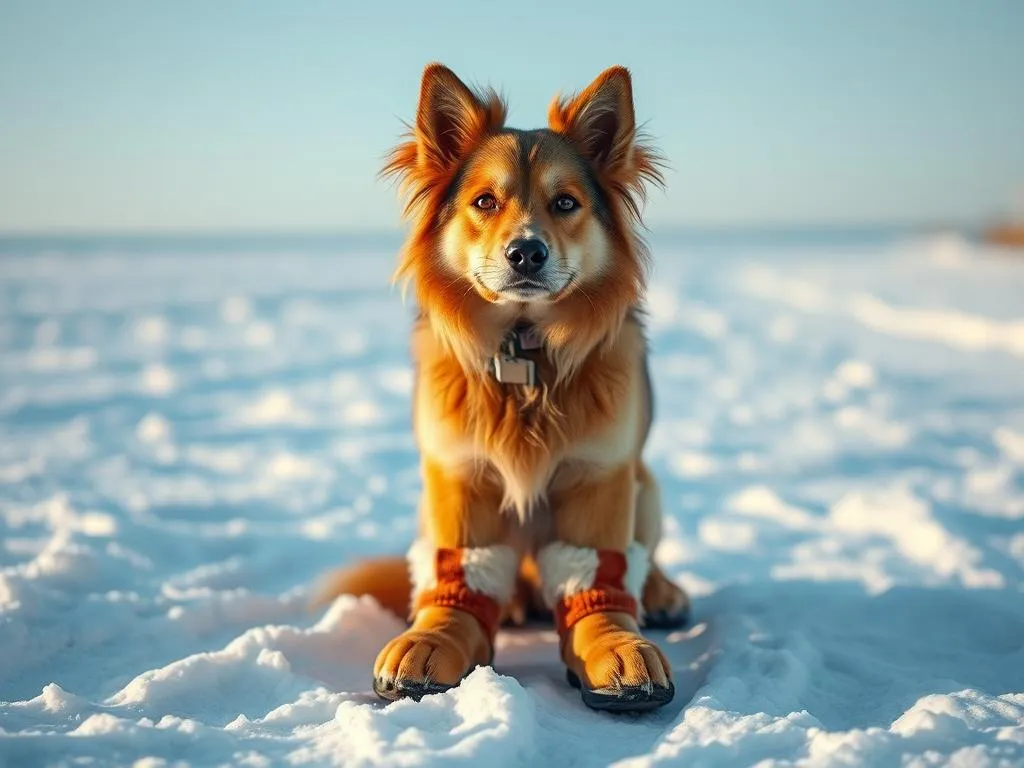
Winter is a magical season, but it can also pose challenges for our furry companions. As the snow begins to fall and temperatures plummet, dogs face a host of winter-related dangers, particularly when it comes to their paws. This is where the best snow boots for dogs come into play. These specialized boots not only protect your dog from the biting cold but also shield their paws from sharp ice, harmful chemicals, and the slippery surfaces that often accompany winter weather.
Let’s explore why snow boots are essential for your canine friend, the features that make them effective, some top recommendations, and tips for care and maintenance.
Why Dogs Need Snow Boots
Protection from Cold and Ice
The cold winter air can be unforgiving, especially for dogs with short coats or those not accustomed to low temperatures. Dogs can suffer from frostbite, just like humans, if exposed to extreme cold for prolonged periods. Their paws are particularly vulnerable, as the pads can become cracked and sore from icy surfaces. Snow boots act as a protective barrier, keeping their paws warm and safe.
Additionally, ice can cause cuts and abrasions. Sharp ice shards can get lodged in between their toes, leading to painful injuries. Snow boots protect against these risks, allowing dogs to enjoy their outdoor adventures without fear of injury.
Better Traction and Stability
Winter often brings slick, icy surfaces that can be treacherous for dogs. Snow boots provide better grip, which is especially beneficial for older dogs or those with existing mobility issues. Boots with good traction help prevent slips and falls, giving your dog the confidence to navigate snowy terrains without fear of injury.
Preventing Salt and De-icer Irritation
Many municipalities use salt and other de-icing chemicals on roads and sidewalks to manage snow and ice. Unfortunately, these substances can be harmful to dogs. They can cause irritation, burns, and even lead to ingestion if dogs lick their paws after walking on treated surfaces. By equipping your dog with snow boots, you can prevent direct contact with these harmful chemicals, keeping their paws safe and healthy.
Features to Look for in Snow Boots
When searching for the best snow boots for dogs, consider these essential features:
Material Quality
The material of the snow boots is crucial for performance. Look for boots made from waterproof and breathable materials. This ensures that your dog’s paws stay dry while also allowing moisture to escape, preventing sweat buildup. Durable materials are also vital for withstanding rugged winter conditions, as they will be exposed to snow, ice, and rough terrains.
Fit and Comfort
A proper fit is essential for your dog’s comfort and safety. Measure your dog’s paws accurately and choose boots designed to fit snugly without constricting. Adjustable straps are a significant advantage, as they allow you to customize the fit, ensuring the boots stay securely in place during use.
Traction Design
The sole design of the boots plays a crucial role in traction. Different tread patterns offer varying levels of grip, so consider where your dog will be walking. Deep treads are ideal for snow and ice, while flatter soles may be better for dry surfaces. Look for boots that provide excellent traction across different terrains.
Insulation and Warmth
Not all snow boots have the same level of insulation. Depending on the climate in your area, you may want to choose boots with additional insulation for extreme temperatures. Insulated boots help keep your dog’s paws warm, allowing them to enjoy their winter activities for longer periods.
Top Picks for the Best Snow Boots for Dogs
Budget-Friendly Options
- Pawz Dog Boots
- Pros: Affordable, disposable, and perfect for short outings.
-
Cons: Not very durable for long-term use.
-
Ultra Paws Durable Dog Boots
- Pros: Easy to put on, machine washable, and good for various terrains.
- Cons: Limited insulation for extreme cold.
Mid-Range Choices
- Muddy Paws Waterproof Dog Boots
- Pros: Waterproof, durable, and come in various sizes.
-
Cons: May require some time for your dog to adjust to wearing them.
-
QUMY Dog Boots
- Pros: Non-slip sole, reflectors for visibility, and adjustable straps.
- Cons: Some users report difficulty with sizing.
Premium Snow Boots
- Ruffwear Polar Trex
- Pros: Excellent traction, insulated, and designed for extreme conditions.
-
Cons: Higher price point, but worth it for durability and performance.
-
Kurgo Step & Strobe Dog Boots
- Pros: Waterproof, LED lights for visibility, and high-quality materials.
- Cons: Can be too bulky for smaller breeds.
How to Introduce Your Dog to Snow Boots
Choosing the Right Time
Timing is crucial when introducing your dog to snow boots. Start the process at home before the first snowfall, allowing your dog to become familiar with the boots in a controlled environment.
The Introduction Process
-
Let Them Sniff: Allow your dog to explore the boots first. Let them sniff and investigate at their own pace.
-
Try One Boot at a Time: Begin by putting one boot on a front paw and encouraging your dog to walk around.
-
Positive Reinforcement: Use treats and praise to reward your dog for wearing the boots. This will help create a positive association.
-
Gradually Increase Duration: Once your dog is comfortable with one boot, add the others one at a time, gradually increasing the time they wear them.
Monitoring Your Dog’s Response
Watch your dog closely for signs of discomfort. If they are trying to remove the boots or seem distressed, take a step back. It may take time for them to adjust. If your dog continues to resist, consider shorter training sessions and more treats to encourage them.
Care and Maintenance of Snow Boots
Cleaning Instructions
After a day of fun in the snow, it’s essential to clean the boots to maintain their condition. Gently wipe off snow and dirt with a damp cloth. For deeper cleaning, check the manufacturer’s instructions, but most snow boots can be machine washed on a gentle cycle, provided they are air-dried afterward.
Storage Tips
Proper storage is key to prolonging the lifespan of your dog’s snow boots. Ensure the boots are completely dry before storing them in a cool, dry place, away from direct sunlight. This prevents materials from degrading and helps maintain their shape.
Regular Inspections
Regularly inspect the boots for signs of wear and tear. Look for cracks, worn-out soles, and frayed straps. If the boots show significant damage, it’s time to replace them to ensure your dog’s safety.
Conclusion
The best snow boots for dogs can make a significant difference in your pet’s comfort and safety during the winter months. With proper care, a good pair of snow boots will protect your dog from the cold, provide better traction, and prevent irritation from harmful chemicals. Choose a pair that suits your dog’s needs, and enjoy the snowy adventures together!









